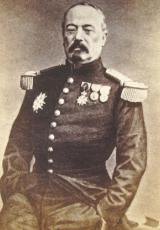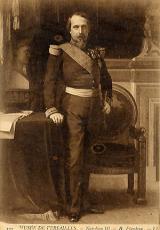The French Foreign Legion
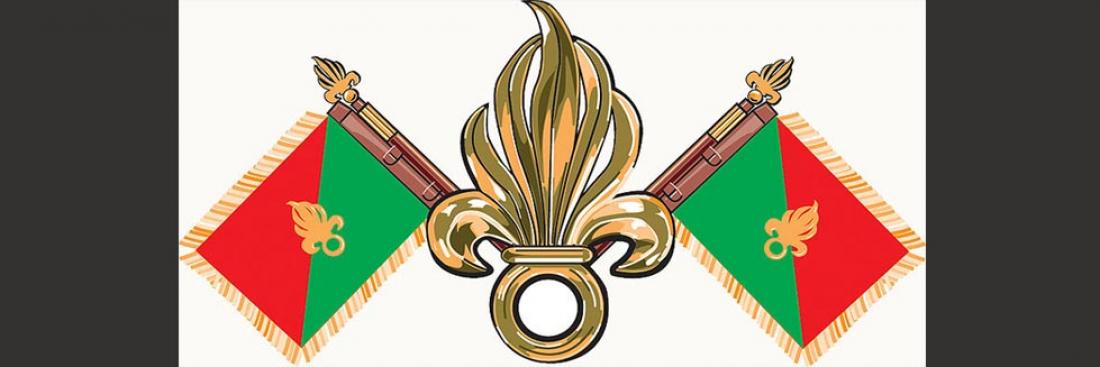
The French Foreign Legion - History
In 1831, the French Conquest of Algeria had just started and further reinforcements were already being called for. The Legion was created precisely to provide these extra troops. It was formed of regular soldiers from all across Europe who were left unemployed after the imperial and revolutionary wars and sought refuge in France. To facilitate the recruitment of foreign nationals who having hastily fled their country did not have any papers, the legislator authorised that men could be hired on simple declaration of their identity. Thus, the law of 9 March 1831 and its application decree of 10 March contained the two essential principles that still make the Legion so particular today: a dedicated overseas service role and the option to enlist under a pseudonym (”declared identity”).
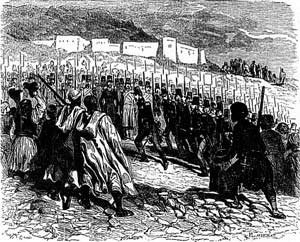
People in Oran coming to watch the landing of French soldiers. Source: Bibliothèque nationale de France. www.gallica.bnf.fr
The first legionnaires landed in Algeria in August 1831. On 27 April 1832, they received their baptism of fire in front of Maison Carrée and, during the course of combats, carved out their reputation as tough and valiant fighters. At the same time, as the French army progressed, swapping between the pickaxe and the rifle, they imposed a style that would soon become the hallmark of the Foreign Legion and its ”soldiers-cum-builders”. The Legion's masterpiece was creating a whole town in 1843: Sidi-bel-Abbès, the site of the headquarters and capital of the French Foreign Legion.
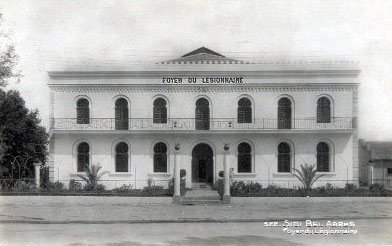
Maison Carrée. Sidi-bel-Abbès. Source: Postcard
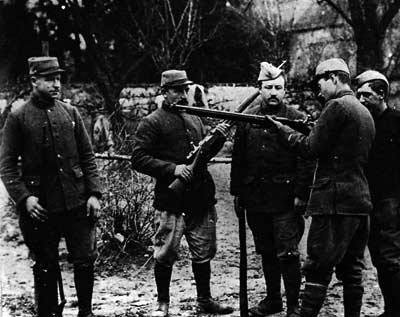
Legionnaires in September 1914. Source: Musée de la Légion (the French Foreign Legion Museum).
In 1833, France relaunched its policy of colonial expansion. The government recruited bigger numbers in the Foreign Legion and made the force the spearhead of its expeditionary corps wherever it wanted to impose its presence: in Tonkin from 1883, Formosa in 1885, Sudan from 1892 to 1893, Dahomey from 1892 to 1894, Madagascar from 1895 to 1905, and Morocco from 1900 to 1934. Day to day, the Legion actively participated in expanding the colony through its civil engineering projects.
The Foreign Legion was serving in Morocco when the First World War erupted. Five march regiments were formed and then reorganised into a single regiment on 11 November 1915 due to severe losses to create the RMLE or the Foreign Legion Marching Regiment. Colonel Rollet, who took command of the RMLE after the death of Colonel Duriez, killed leading his men, returned from four years at war with the most decorated flag of the French army with that of the Colonial Infantry Regiment of Morocco.
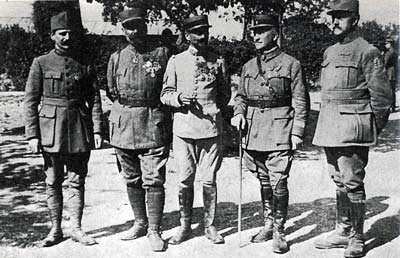
Lieutenant colonel Rollet and his majors in July 1917. Source: Musée de la Légion (the French Foreign Legion Museum).
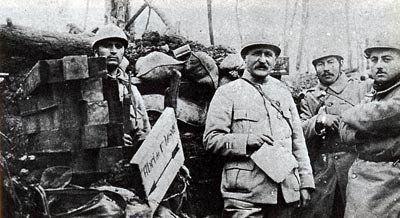
Lieutenant Colonel Duriez in April 1917. Source: Musée de la Légion (the French Foreign Legion Museum).
From 1946, the 2nd REI, the 13th Demi-Brigade of the Foreign Legion, the 3rd REI and the 1st Foreign Cavalry Regiment landed in Indochina and received backup from a new type of unit: the Foreign Parachute Battalions. In this war during which the government did not want to engage its contingent, the Foreign Legion was called to arms with troops of up to 30,000 men, a large majority of which were German. From Phu Tong Hoa to Dien Bien Phu, the Legion lost some 300 officers, including four commanders in chief, and over 10,000 non-commissioned officers and legionnaires. This campaign was the bloodiest in the entire history of the Foreign Legion.
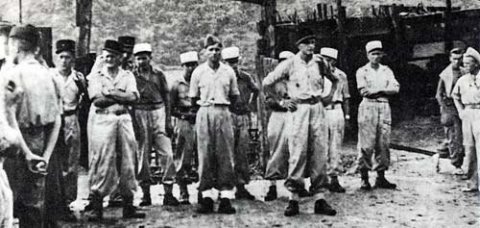
Survivors of the Battle of Phu Tong Hog in July 1948. Source: Musée de la Légion (the French Foreign Legion Museum).
Even before the hostilities ended in Indochina, the first troubles appeared in North Africa. The Legion was sent to fight first in Morocco and Tunisia and then in Algeria. In 1962, the Legion left Algeria, which had recently achieved independence, and the monument to the dead in Sidi-bel-Abbès was moved to Aubergine.
Between 1962 and 1969, the Foreign Legion went through some changes. Forever present in the Overseas Territories, in Madagascar and then in Guiana, Dijbouti, French Polynesia and the archipelago of the Comoros Islands, the legionnaires became builders once again: the 5th Foreign Regiment created in French Polynesia the necessary infrastructure for the French nuclear tests. In Guyana, the 3rd Foreign Infantry Regiment forged the road in the East and built the launch site at the Guiana Space Centre. In mainland France, the legionnaires worked on the construction of tracks at the large military camps in the south of France.
The Foreign Legion's operational activities recommenced in the 1970s. The Legion first served in Chad, from 1969 to 1970, and returned to the country from 1978 to 1988. In 1978, it was put under the spotlight with the intervention of the 2nd Foreign Parachute Regiment in Zaire. The Regiment's daring airborne operation led by Kolwezi helped save the European population from massacre. In 1983, the Legion was engaged in Beirut, as part of the multinational security force.
In 1991, during the Gulf War, over 2,500 legionnaires took part, within the Daguet Division, in the victorious Operation Desert Storm. The 1st Foreign Cavalry Regiment, the 2nd Foreign Infantry Regiment and the new 6th Foreign Engineer Regiment were each awarded the Order of the Army. From that time, the Legion and the rest of the French army were involved in more and more operations that were increasingly multinational.

On patrol on a river in Cochinchina, a soldier stands at his fire stand on board one of the Engineer Regiment's armoured vessels. The machine gun is a 12.7 mm Browning (.50 calibre). December 1947. Source: SCA - ECPAD Photo: Verneret
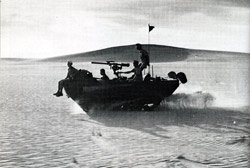
Operation Camargue: A crab moves along the Rue sans joie (Street with no joy). Annam Centre, July 1953. Source: ECPAD
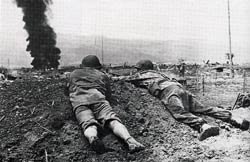
Legionnaires at the start of the Battle of Dien Bien Phu. 13 March 1954. Source: ECPAD
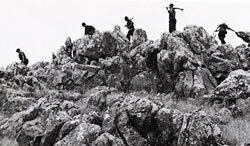
Operation Jumelles: July 1959 to February 1960. Source: ECPAD
External website: Légion étrangère
Source: Mindef/SGA/DMPA - Musée de la Légion - ECPAD



